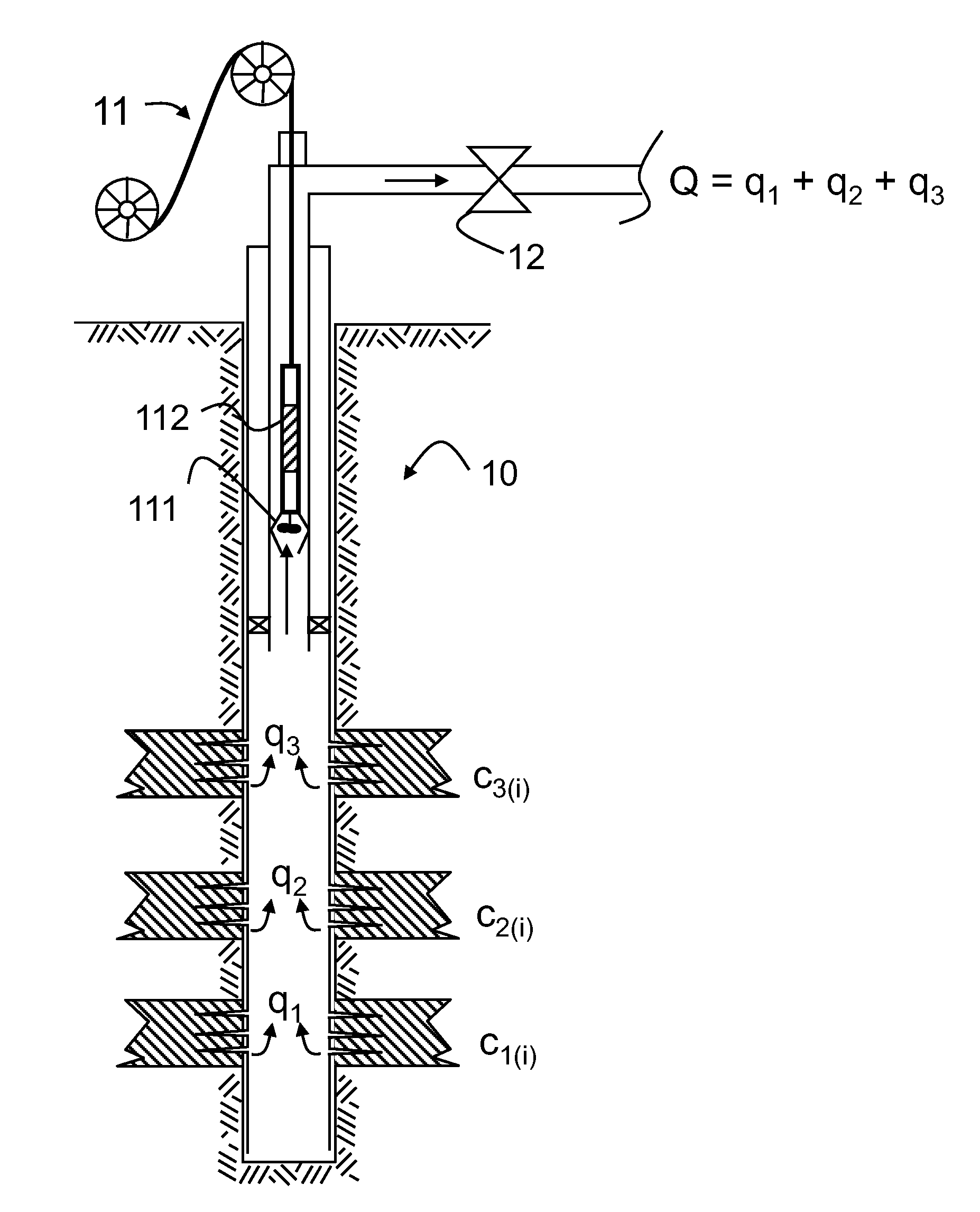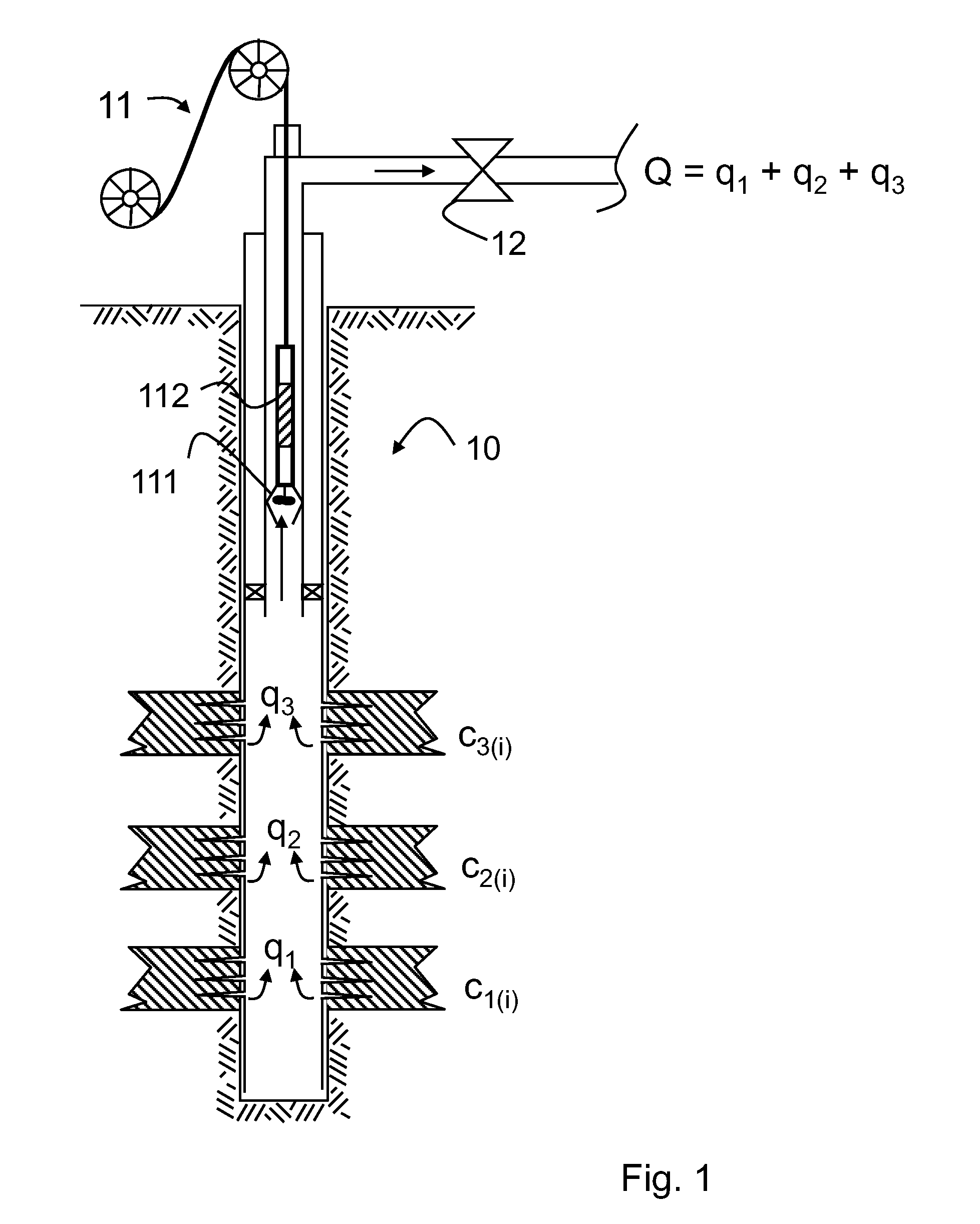Method of determining end member concentrations
a technology of end members and concentrations, applied in survey, earth-moving drilling, borehole/well accessories, etc., can solve the problems of limiting the general application of known geochemical fingerprinting techniques for production allocation, complex tool runs for downhole sampling, and high cost, so as to reduce the number of tool runs through the well, the effect of reducing costs and risks
- Summary
- Abstract
- Description
- Claims
- Application Information
AI Technical Summary
Benefits of technology
Problems solved by technology
Method used
Image
Examples
Embodiment Construction
[0022]The method is illustrated by the following example, in which FIG. 1 shows an oil well 10 drilled in a formation containing several oil-bearing layers. In this example, the number of separate layers is chosen to be three to allow for a clearer description of elements of the present invention. However, the number of layers can vary and the below described example is independent of any specific number of layers.
[0023]In the example, there is assigned to each layer a flow rate q1, q2, and q3 , respectively. The fluids produced from the three layers contain chemical components at the so-called end member concentrations c1i, c2i and c3i, respectively, wherein the index number i denotes a specific component i in the fluid.
[0024]In the present example, the component i stands for any component or species being part of the flow stemming from the respective zone. Any such component can be selected as geomarker for later application of a back allocation through fingerprinting. It will be ...
PUM
 Login to View More
Login to View More Abstract
Description
Claims
Application Information
 Login to View More
Login to View More - R&D
- Intellectual Property
- Life Sciences
- Materials
- Tech Scout
- Unparalleled Data Quality
- Higher Quality Content
- 60% Fewer Hallucinations
Browse by: Latest US Patents, China's latest patents, Technical Efficacy Thesaurus, Application Domain, Technology Topic, Popular Technical Reports.
© 2025 PatSnap. All rights reserved.Legal|Privacy policy|Modern Slavery Act Transparency Statement|Sitemap|About US| Contact US: help@patsnap.com



